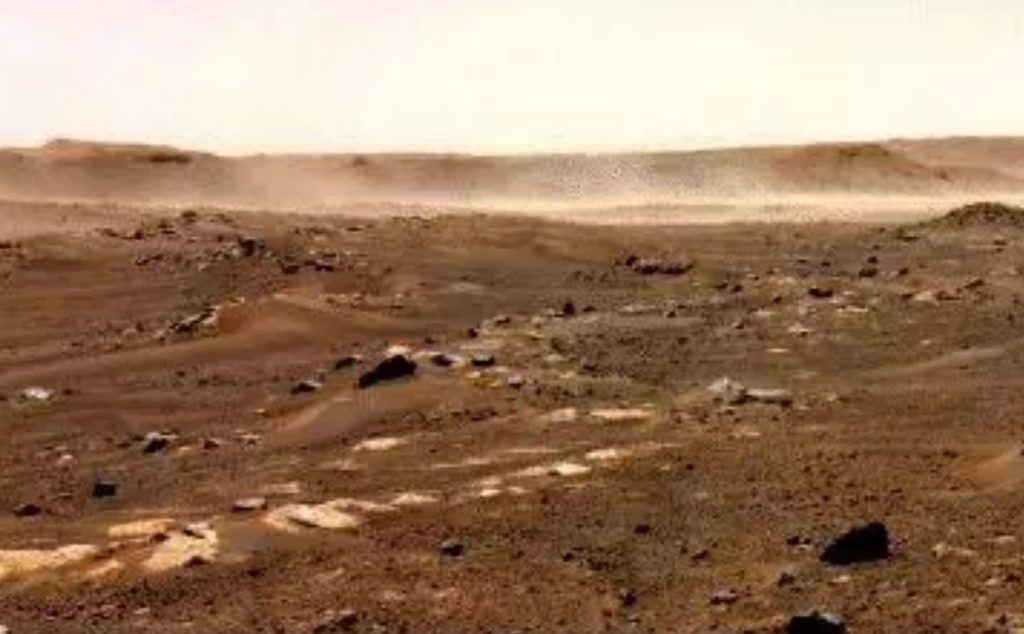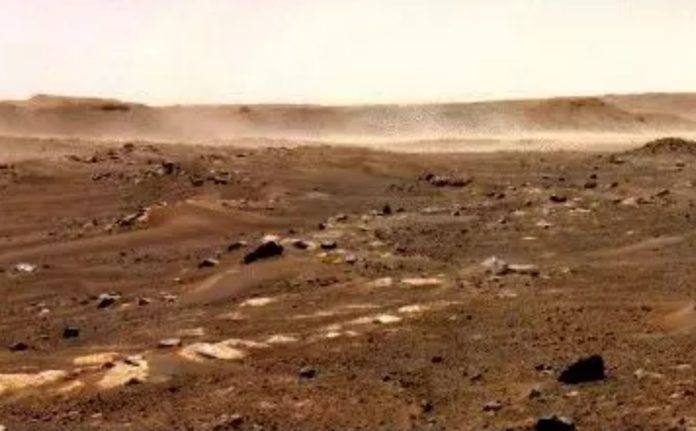NASA’s Perseverance recorded the first footage of a large Martian dust cloud being lifted by wind gusts.
NASA’s Perseverance Mars rover encountered some of the most extreme dust activity yet seen by a mission launched to the Red Planet’s surface during its first several hundred days in Jezero Crater.
Perseverance not only discovered hundreds of dust-bearing whirlwinds known as dust devils, but it also acquired the first footage of wind gusts lifting a gigantic Martian dust cloud.

The wealth of meteorological occurrences recorded in the first 216 Martian days, or sols, is chronicled in an article recently published in Science Advances.
The new discoveries help scientists better understand dust processes on Mars and add to a body of knowledge that could one day help them predict the dust storms that are so famous on the Red Planet – and that represents a threat to future robotic and human explorers.
“Every time we land in a new place on Mars, it’s an opportunity to better understand the planet’s weather,” says Claire Newman, lead author. “We had a regional dust storm right on top of us in January,” she adds, “but we’re still in the middle of dust season, so we’re very likely to see more dust storms.”
The rover’s cameras and a suite of sensors from the Mars Environmental Dynamics Analyzer (MEDA), a science instrument led by Spain’s Centro de Astrobiologa in collaboration with the Finnish Meteorological Institute and NASA’s Jet Propulsion Laboratory in Southern California, were used to make these observations.
Wind sensors, light sensors that can detect whirlwinds as they disperse sunlight around the rover, and a sky-facing camera for capturing photos of dust and clouds are all included in MEDA.
“Jezero Crater may be in one of the most active sources of dust on the planet,” points out Manuel de la Torre Juarez, MEDA’s deputy principle investigator at NASA’s Jet Propulsion Laboratory. “Everything new we learn about dust will be helpful for future missions.”

Frequently Occurring Whirlwinds
On an average Martian day, at least four whirlwinds pass Perseverance, and more than one per hour goes by at a peak hourlong period right after midday, according to the study’s authors.
The rover’s cameras also captured three instances of enormous dust clouds being lifted by wind gusts, which scientists refer to as “gust-lifting events.”
The largest of these produced a huge cloud that covered 1.5 square miles (4 square kilometers). According to the study, these wind gusts could lift as much as or more dust as the whirlwinds that far outnumber them.
“We think these gust-liftings are infrequent but could be responsible for a large fraction of the background dust that hovers all the time in the Martian atmosphere,” Newman says.
Image Credit: NASA
You were reading: Stunning New NASA Video Captures Wild Winds Of Jezero Crater
